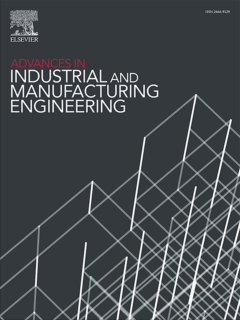Open Access Publication
At the IDDRG 2025 conference in Lisbon, the paper “Improving the local formability of an AA7075 aluminum alloy by laser-induced modification of the alloying concept” was recognized as one of the ten best conference papers. The expanded version has now been published in the prestigious journal Advances in Industrial and Manufacturing Engineering (AIME, Scopus Q1) and is available as open access. The publication, titled “Impact of partial rolling on structural integrity and mechanical properties of AA7075 Tailor Alloyed Blanks,” presents new findings on the innovative approach of tailor alloyed blanks. Given the rising global demand for aluminum alloys, sustainable material strategies are gaining increasing importance. Since primary aluminum production from bauxite is energy-intensive and involves global raw material dependencies, recycling concepts and new alloying approaches are coming into focus. Secondary aluminum, i.e., aluminum recovered from scrap, requires only a fraction of the energy of primary production but places higher demands on the purity and composition of the material. One approach to maintaining mechanical performance despite greater material diversity is the use of crossover alloys. These combine different alloy systems to unite their respective advantages—such as high strength and good formability—in a single material. In practice, however, these crossover alloys reach their limits when components have complex geometries or locally varying requirements. For example, one area might require high strength, while another needs to be particularly ductile. This is where the concept of tailor-alloyed blanks comes in. It allows the alloy composition to be locally modified within a single sheet – precisely where specific properties are required. This makes it possible to combine areas with high strength and zones with increased formability and adapt them to the respective application. The recently published paper demonstrates how this concept can be further optimized by an additional, partial rolling step. This process improves the surface quality and strength of the locally modified areas while simultaneously increasing process stability and formability.
The article can be viewed at https://doi.org/10.1016/j.aime.2025.100176. It was written as part of the project “Tailor Alloyed Blanks – Production of high-strength, process-adapted semi-finished products through local laser-based adaptation of the alloy system” (project number 521490180), funded by the German Research Foundation (DFG).

